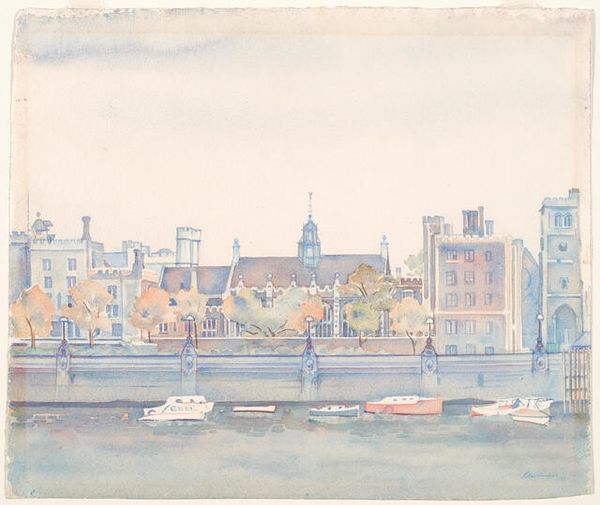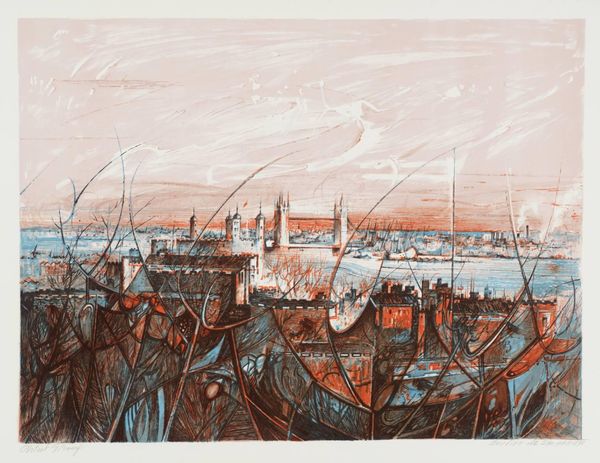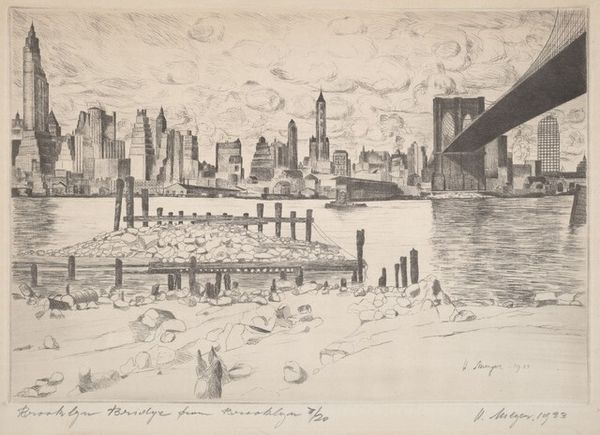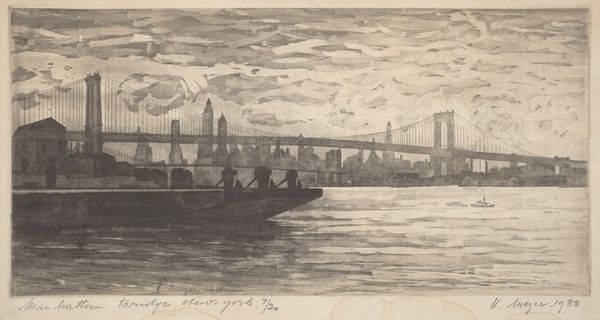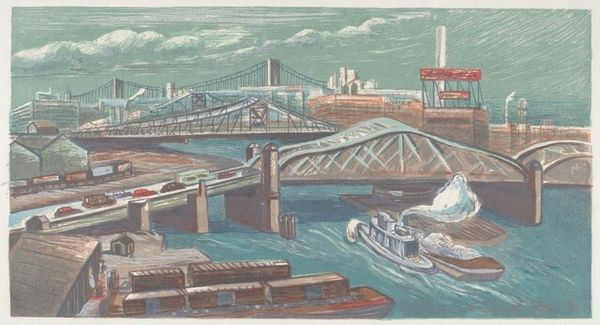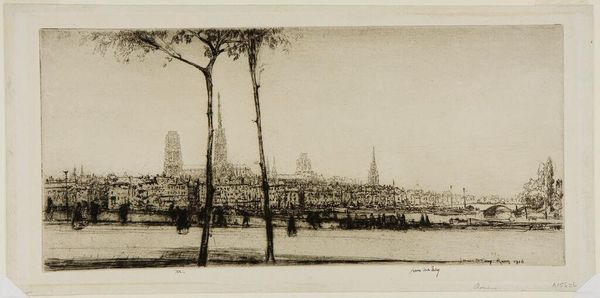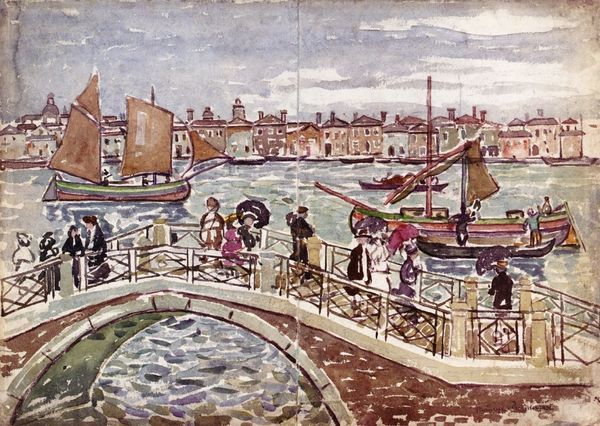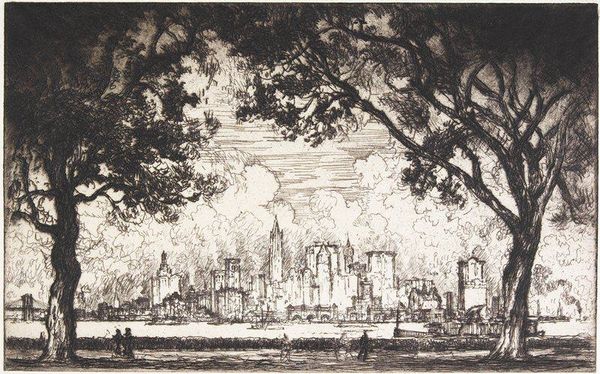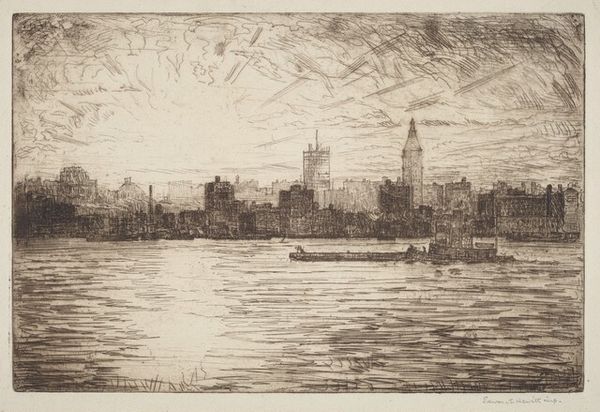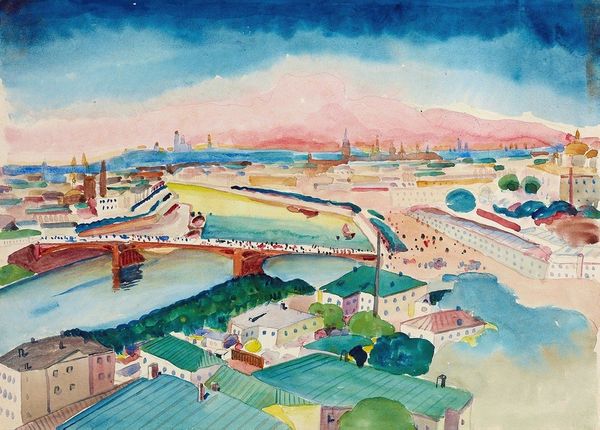
painting, print, watercolor
#
water colours
#
painting
# print
#
watercolor
#
naive art
#
cityscape
#
watercolour illustration
#
modernism
#
watercolor
#
realism
Dimensions: Image: 252 x 387 mm Sheet: 325 x 443 mm
Copyright: National Gallery of Art: CC0 1.0
Editor: This is Harry Shokler's "Brooklyn Heights Esplanade," created around 1951, and appears to be a watercolor print. There's a striking contrast between the cool blues and greens of the waterfront and the warmer tones of the promenade. How do you interpret this work, considering the social context of the time? Curator: Shokler's piece invites us to consider the urban landscape and who has access to it. The post-war period witnessed a surge in urban planning and infrastructure development, often displacing marginalized communities. Looking at the figures populating the esplanade, we might ask: Who is represented here, and who is missing? How does the artist's perspective shape our understanding of urban space and social inequality? Editor: That's a powerful point. The people depicted do seem to be enjoying leisure time. Is Shokler commenting on the privilege inherent in accessing such a space? Curator: Exactly. The seemingly innocent depiction of leisure masks a complex web of social and economic disparities. Furthermore, the vantage point – elevated and distanced – positions the viewer as an observer, perhaps even complicit in the structures that create these inequalities. What feelings does that distance create for you? Editor: It definitely makes me think about the role of art in either challenging or reinforcing those structures. It almost feels like a scene from a play, like we're watching a tableau. Curator: Precisely. And considering the art world's own history of exclusion and marginalization, this piece prompts us to critically examine the representation of urban life and the narratives that are often privileged over others. This is Modernism leaning toward Realism with social undertones. Editor: This has definitely opened my eyes to seeing the artwork with a different, critical lens. I had not considered the inequalities of access in city spaces when initially considering the artwork. Curator: Understanding the sociopolitical undercurrents enriches our comprehension, it transforms art into a vital instrument for social change and justice.
Comments
No comments
Be the first to comment and join the conversation on the ultimate creative platform.
